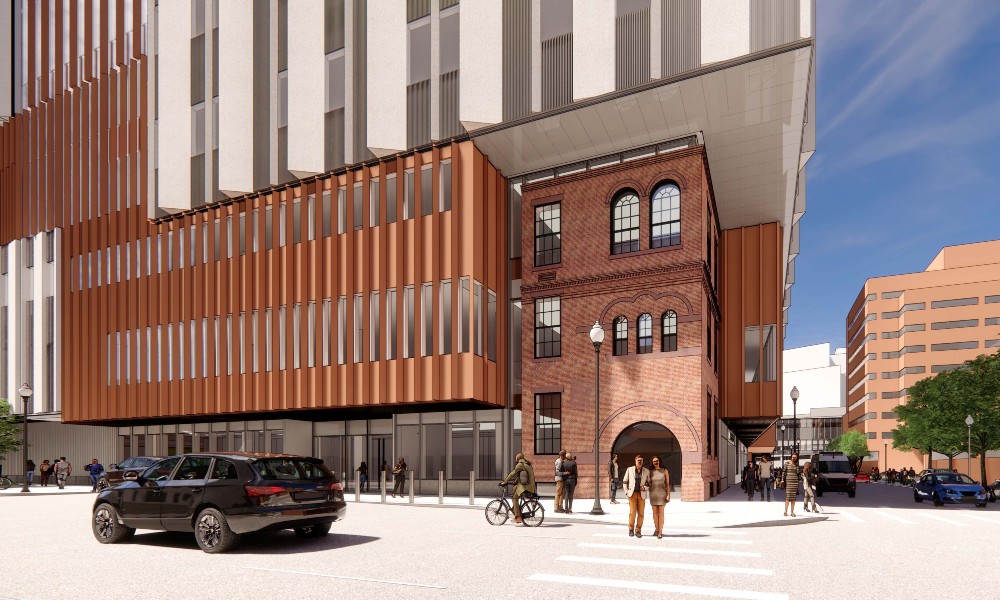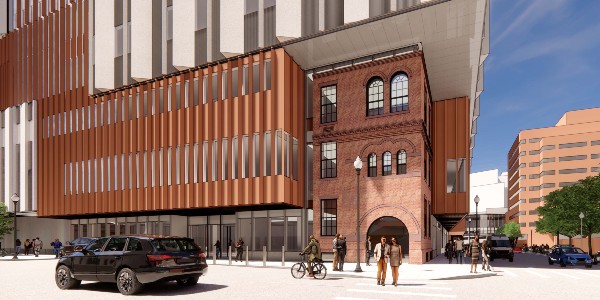Phillip and Susan Ragon Building Project
West End Neighborhood and City Benefit


A Sustainable and Resilient Building
The Phillip and Susan Ragon Building will be resilient, able to withstand major flooding and high winds, serving as a critical resource for patients, families, staff and the community during a disaster. It will also be a sustainable structure, reflecting a commitment to significantly reduce the hospital’s carbon footprint. The building will be powered almost entirely using renewable electricity, with a plan to achieve a net zero carbon in both operations and construction.
Learn more about the approach for site sustainability and resilience >
Benefit to the Neighborhood
This new building will benefit the immediate neighborhood by enhancing and enlivening Cambridge Street as an important gateway into Boston. Retail space and a restaurant, located on the ground floor, will augment the activity and enrich the vitality of the area. A glass pavilion — the North Anderson Street arcade — will create an open feel from Cambridge Street back toward the Bulfinch lawn and the iconic Bulfinch Building. Inside the arcade will be curated exhibits to be developed with the West End Museum and the Museum of African American History. The building’s exterior will reflect the vibrancy and history of the West End community, with the facade of the former Winchell School — later known as Ruth Sleeper Hall — incorporated into the facility at the corner of Blossom and Parkman streets, where the school had been situated.
Mass General is also supporting the community and some of its most treasured organizations and programs in a number of ways, including creating a West End senior/community center and food bank, and providing financial support to the West End Museum, the Museum of African American History, the Old West Church and the Esplanade Association.
A construction project of this size will enable the hospital to pursue an anchor strategy in which a major focus will be placed on hiring a workforce that include a significant percentage of people of color and women. Beyond hiring workers for the construction trades, the project will prioritize working with diverse engineers, consultants and others who can provide the expertise and services needed. The project will also offer training and apprenticeship opportunities to those looking to enter or gain experience working in various building trades and related professions. The Mass General building has already begun looking to and relying upon minority-owned and women-owned businesses when purchasing supplies and other services, and these efforts will expand with the construction of the new facility.
Finally, this project affords an opportunity for the city, community and hospital to work together to rethink transportation and traffic patterns — vehicular, bicycle and pedestrian — in the area. Also, space on the building’s street level will be reserved for the MBTA to use as a future subway station headhouse for the proposed Red-Blue Connector.
